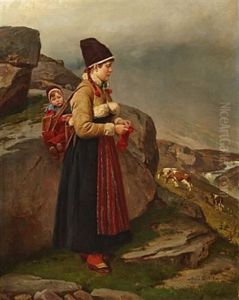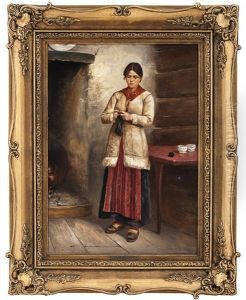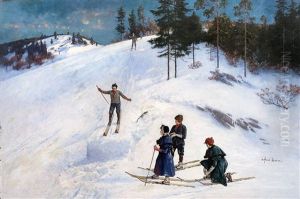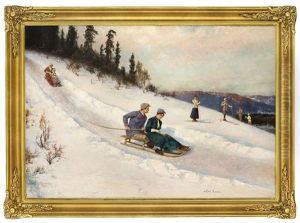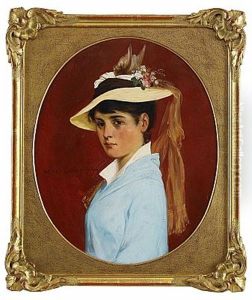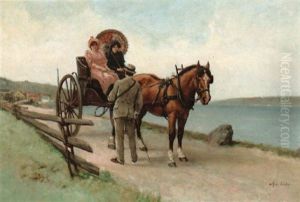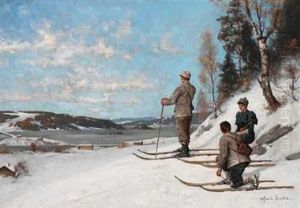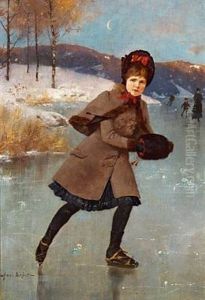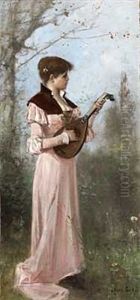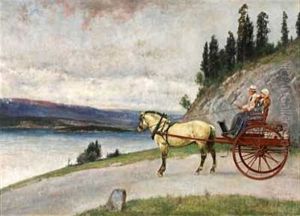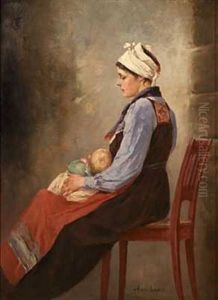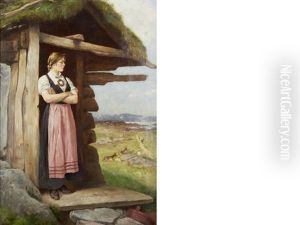Axel Ender Paintings
Axel Ender was a Norwegian painter, illustrator, and sculptor, born on December 3, 1853, in Modum, Norway. He is often noted for his contributions to Norwegian art in the late 19th and early 20th centuries, a period that was critical for the development of national identity in Norway. Ender grew up in an artistic environment, as his father was a painter, and he was influenced by the romantic nationalistic movement that was prevalent in Norway at the time.
Ender received his initial artistic education at the Drawing School in Oslo (then called Christiania) before continuing his studies abroad. Like many Scandinavian artists of his generation, he traveled to Germany to attend the Academy of Fine Arts in Munich, which was a major center for artistic training. Ender's education in Munich exposed him to classical art training, and this experience would have a lasting influence on his artistic style and methods.
Throughout his career, Axel Ender was known for his genre paintings, historical scenes, and religious motifs. His works often depicted moments from Norwegian history, folklore, and mythology, which resonated with the nationalist sentiments of the period. One of his most famous paintings is 'Bergtaking av Håkon Håkonsson' ('The Kidnapping of Håkon Håkonsson'), which portrays a significant event in Norwegian history and reflects the romanticized view of the nation's past.
Ender also worked on illustrations for books and periodicals, contributing to the visual culture of his time. He was a versatile artist, and his sculptural works further demonstrate his artistic range. In addition to painting and sculpture, Ender was involved in public art projects, including church decorations, which highlight his role in the artistic and cultural milieu of Norway.
Axel Ender's contribution to Norwegian art was recognized during his lifetime, and his works were exhibited at various venues, including the National Gallery in Oslo. He was part of a generation of artists who played a key role in the development of a distinct Norwegian art scene, separate from the influences of neighboring countries.
Ender's dedication to depicting Norwegian heritage and his skillful execution of various artistic mediums have ensured his place in the history of Norwegian art. He passed away on March 13, 1920, in Bærum, leaving behind a legacy that continues to be studied and appreciated by art historians and enthusiasts alike.




